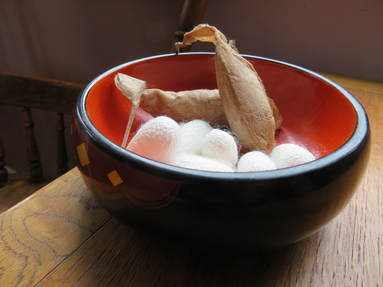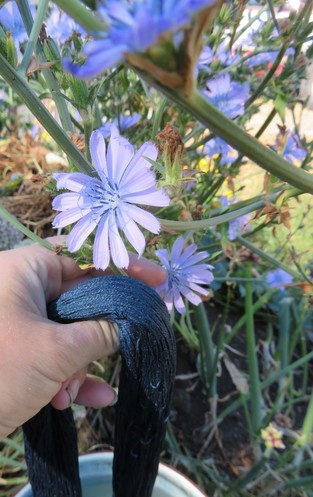|
I am excited to announce Flax to Linen: the movie. A small documentary film I got to make with a few members of the local Flax to Linen group. It's been a rough year and not being able to do public demonstrations hit us pretty hard. When the Victoria Handweavers and Spinners Guild asked us to do a virtual presentation on how linen fabric is made from tiny little flaxseeds, we said "Sure!" Knowing almost nothing about making a video, we dived in. Had fun. Did a little dance (stay tuned to the end to see the dancing) and devised a COVID-19 safety plan to keep everyone safe.
I'm very happy with how it turned out. I learned a lot about video editing. I learned that I have a lot more to learn and with what I know now, I would have done everything differently. But you got to start somewhere. If you enjoy the video and would like to see more like this, pop over to our video on YouTube and clicked the thumbs up. Or better yet, leave a comment. I've got some nifty ideas for 2021 and your encouragement helps keeps the momentum going.
Click "read more" on the right to ...
11/6/2018 grow your own yarn - in an apartment atlas (wild) and bombyx (domestic) silkmoth cocoons atlas (wild) and bombyx (domestic) silkmoth cocoons Before I moved to the farm, I lived in the city. Right at the heart of downtown, in a cement cube with south facing windows surrounded by other people also living in cement cubes. But living in the city had its advantages. All that concrete and asphalt absorb the heat from the sun and holds onto it. This creates a warmer climate than the rest of the area, bumping us up one or even three climate zones. In the city, we can grow things that we cannot in the surrounding countryside. Banana and palm trees are popular choices - in Canada! What I wish I knew at the time is that we can grow cotton too. Cotton grows in the same condition as tomatoes. Cotton loves the warmth and isn't adverse to being kept in pots. In a pot, you can bring cotton inside for the winter. Another thing the city gives us that I don't have on the farm is limited daylight. Cotton is daylight sensitive so on the farm, I have a challenge getting it to set bolls this far north because our days are just too long. But in the summer, the buildings act as a false horizon, cutting off the sun from the earth early. Warmth plus limited daylength. There are lots of other fibre crops and animals we can grow in the city. Linen can also be grown in pots so long as you don't sow the seeds to densely. Within walking distance of my condo were several mulberry trees on public land. Two of them are in gardens specially designed for public harvest - food forest community gardens. I know more than one person who kept silkworms hidden away in their pet-free apartments (caterpillars don't count as pets, right?). They snuck out each morning, about 5am, to harvest mulberry leaves, being careful never to take too much and to always ask permission first. There was an abundance of wormfood available. There was a great article in Spinn Off a few years back explaining how easy it is to grow silk. It was the same one that introduced me to cotton and got me wondering what non-sheep plants and animals can grow fibre in small spaces. Don't have mulberries, try wild silk moths. There are a hundred or more different kinds of moths that produce silk and chances are some of them are native to your area. These wild silk moths produce various colours and textures of silk and in my opinion, they are even more beautiful than bombyx silk. The best thing about them is if they are native to your area, then their food can be found in abundance. Many wild silkmoths consume a variety of different fodder. The Polyphemus moth that is native to my area eats a dozen different trees, so I don't have to go hunting for mulberries. Wormspit's website is the place to go for more information on Bunnies take up a bit more space than silkworms. Angora or any fluffy bunny produces warm and soft fibre. Comb the bunny each day and spin the fibre into lovely lofty yarn. Wildcrafting fibre like nettles or kudzu is another option. Talk to your local parks department to see what you're allowed to harvest. This is also a good source of dye materials. Of course, if you absolutely must have sheep, you can always try to sneak some on the roof. |
CategoriesAll Airwell Angora Animal Fibre Boring Community Cotton Dryland Farming Dye Etsy Shop Experiments Fibre Prep Finance Flax Frugal Household Management Indigo Linen Local Cloth Mediterranean Climate Natural Dye Permaculture Plant Fibre Sewing Silk Tutorial Urban Fibre Vintage Wildcrafting Archives
February 2022
|
|
Created by Tracy Wandling of One Wing Freelance Graphic Design
|

 RSS Feed
RSS Feed
